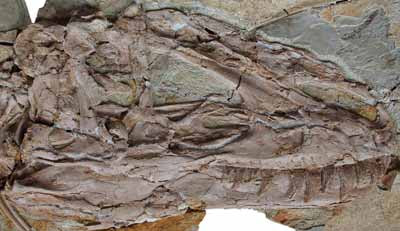A new species of dino has been found, and if you can't tell, I am SUPER excited! It's called Yutyrannus huali and it is HUGE and COVERED IN DOWN. Or rather, it was. And it's a super interesting find, because we didn't know whether this type of dino could even have feathers.
So Y. huali is a therapod, and we know that some therapods had feathers—such as Velociraptor—but until now, all the feathers had been found on small dinos. One of the theories about that was that larger therapods wouldn't need feathers, because their large surface area/volume ratio would allow them to retain heat and thermoregulate that way, but now we have a large therapod covered in feathers—and downy feathers, at that, which are great at retaining heat, since they are so fluffy and have so much space for warm air to nestle in close to the skin. So this raises some really interesting questions about why something that probably doesn't need these feathers would have them. A possible answer has to do with range: perhaps Y. huali lived in cold areas, and gigantothermy wouldn't be enough to keep warm. Another possible answer has to do with climate: maybe it was colder then, so feathers may have been necessary even if Y. huali lived in lower latitudes.
Y. huali is a member of Tyrannosauroidea, the superfamily containing Tyrannosaurus, and going from what we know about other members of this superfamily (including T. rex), we know that the big therapods would have had quite large ranges, going up beyond 60°N. Y. huali was found in Liaoning Province, which is on about the same latitude as, like, Washington or Montana, so it could have been pretty cold when it roamed the earth. But, the large therapods' ranges are functions of both their gigantothermy and the time in which they lived: T. rex lived in the late Cretaceous, when it had become super warm (the ocean was usually around 37° C), so naturally T. rex could move farther north; it was pretty balmy up there, and it probably didn't even need feathers to keep warm. But we also know when Y. huali lived: during the early Cretaceous, when global temperatures were still quite low, coming off the period of cooling that had begun in the late Jurassic. So in this case, it may be super advantageous for Y. huali to have those feathers, if it's going to be wandering around up in the northern latitudes in the cold part of the Cretaceous. Additionally, Y. huali may have used its feathers for display purposes or maybe for camouflage, depending on what color they were.
The discovery of a feathered Tyrannosauroid also points to a possibly feathered T. rex. It's possible that young T. rexes had feathers, since they were smaller and so didn't have the SA/V ratio advantage, but since no one has found and feathered T. rex fossils, we can't say for sure. Also, factoring in the warmth of the late Cretaceous, T. rex adults may really have wanted to lose their feathers; otherwise, they may have overheated, which would be bad news. But finding Y. huali at least lends some gravity to the feathered T. rex juvenile theory, if not the theory of a perpetually feathered T. rex, since it showed that feathers had been evolved at least once in this clade.
READ THESE THINGS:


1 comment:
Thanks for putting this amazing finding in context for us, Laura!
Post a Comment